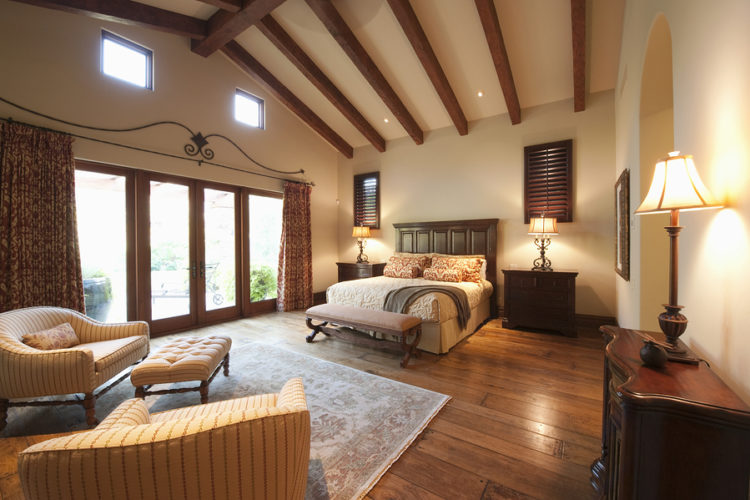
- By Brad Long
- In Uncategorized
What Do I Need To Know Before Adding To My Second Floor Home?
Adding an addition to a home on the second floor can be a great way to increase living space and add value to your home. However, it’s important to carefully consider the process and potential challenges before starting the project.
The first step in adding an addition to your home is to determine whether it’s feasible. Factors to consider include the structure of the existing house, zoning regulations, and potential impact on neighboring properties. It’s also important to consider the cost and the potential return on investment, as adding a second-floor addition can be a significant investment.
Once you’ve determined that adding a second-floor addition is feasible, the next step is to create a detailed plan. This plan should include the design of the addition, the materials and finishes you’ll use, and a timeline for the project. It’s also important to work with an architect or designer who can help you create a plan that meets your needs and fits with the style of your home.
When planning your second-floor addition, it’s important to consider how the new space will be used. Will it be a bedroom, a home office, or a playroom for the kids? This will help you determine the layout and size of the addition, as well as the types of finishes and materials you’ll use.
Another important factor to consider when adding a second-floor addition is the impact on the rest of your home. Will the addition require changes to the existing structure, such as reinforcing the foundation or adding support beams? It’s also important to consider the impact on heating and cooling systems, as well as electrical and plumbing systems.
Once you have a detailed plan in place, it’s time to start the construction process. This can be a major undertaking, so it’s important to work with a reputable contractor who has experience with second-floor additions. Be sure to get multiple bids and ask for references before choosing a contractor.
During the construction process, it’s important to be prepared for potential challenges. Weather delays, unexpected expenses, and other issues can arise, so it’s important to have a contingency plan in place. It’s also important to communicate regularly with your contractor and make sure you’re on the same page regarding the timeline and budget for the project.
After the construction is complete, it’s time to enjoy your new living space. A second-floor addition can add value to your home and provide additional living space for your family. Whether you’re using the space as a bedroom, office, or playroom, it’s important to decorate and furnish the space in a way that meets your needs and fits with the style of your home.
Adding a second-floor addition to your home can be a significant investment, but it can also provide numerous benefits. By carefully planning the project and working with a reputable contractor, you can create a space that meets your needs and adds value to your home.
Adding a bathroom to the second floor
Adding a bathroom to the second floor of a home can be a great investment, as it not only increases the functionality of the space but also the value of the property. This project can seem daunting, but with careful planning and execution, it can be a rewarding and successful endeavor.
The first step in adding a bathroom to the second floor of a home is to determine the available space. This can be achieved by taking measurements of the potential bathroom area and assessing the existing plumbing and electrical infrastructure. Depending on the available space, it may be necessary to reconfigure the layout of the existing floor plan to accommodate the new bathroom. This may involve removing walls or adding new ones, as well as repositioning doorways or windows.
Once the space has been identified, the next step is to determine the design and layout of the bathroom. This includes choosing fixtures such as a toilet, sink, and shower or tub, as well as determining the placement of each element. It is important to consider the overall flow of the bathroom and ensure that there is adequate space for each fixture, as well as for movement within the space. This is especially important in smaller bathrooms, where space can be at a premium.
In addition to the layout and design of the bathroom, it is important to consider the materials and finishes that will be used. This includes choosing flooring, wall tile, and paint colors. These elements should be cohesive with the existing decor and style of the home, and should also be chosen with durability and ease of maintenance in mind.
Once the design and materials have been chosen, the next step is to hire a contractor to complete the work. This includes obtaining any necessary permits and ensuring that the work is completed in compliance with local building codes and regulations. It is important to choose a contractor who is experienced in bathroom renovations and who has a proven track record of success. This can be achieved by asking for referrals from friends and family, as well as by checking online reviews and ratings.
During the renovation process, it is important to ensure that the work is progressing as planned and that any issues or concerns are addressed in a timely manner. This includes staying in communication with the contractor and regularly inspecting the work to ensure that it meets the desired quality standards. It is also important to be flexible and open to changes, as unforeseen issues can arise during the renovation process that may require adjustments to the original plan.
One of the key considerations when adding a bathroom to the second floor of a home is the plumbing and electrical infrastructure. This may require significant upgrades or modifications to the existing systems, particularly if the bathroom is being added in a location that was not previously plumbed or wired for this purpose. It is important to ensure that the new plumbing and electrical work is completed to a high standard, with appropriate permits obtained and inspections conducted as required.
In addition to the plumbing and electrical work, it is also important to consider ventilation in the new bathroom. This may involve installing a fan or other ventilation system to ensure that moisture and odors are properly vented out of the space.
Adding a bathroom to the second floor of a home can be a complex and involved process, but with careful planning and execution, it can be a successful and rewarding investment. By taking the time to consider the available space, design and materials, and choosing a reputable contractor, homeowners can create a new bathroom that not only meets their functional needs but also enhances the overall value and appeal of their home.






